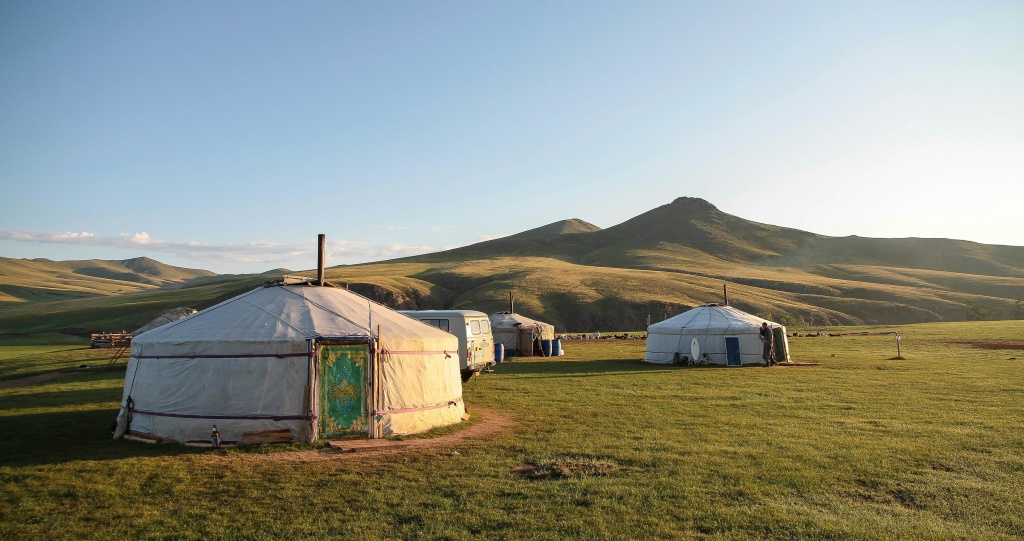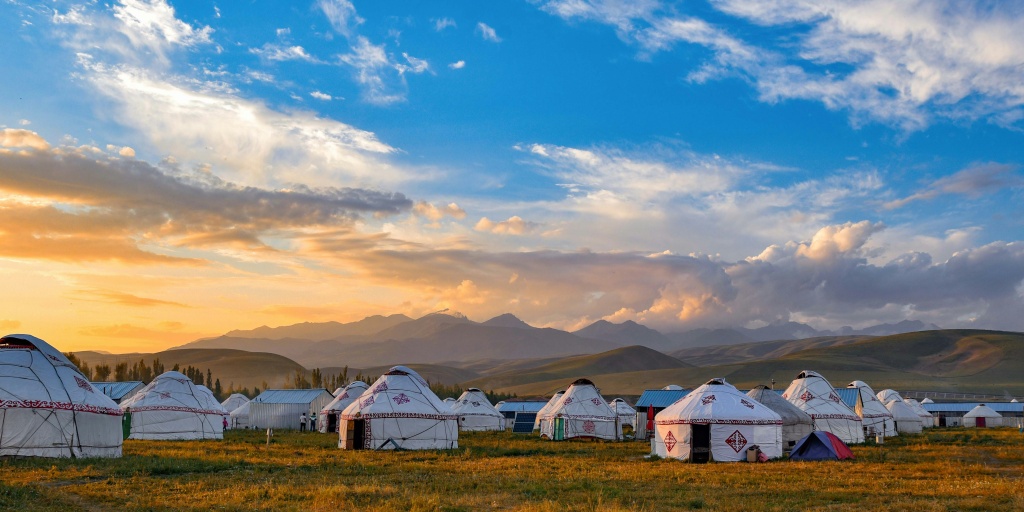A yurt is more than just a home — it is an important symbol of nomadic culture. It reflects the traditions, lifestyle, and worldview of steppe peoples. For centuries, Kazakhs, Kyrgyz, Mongols, and other Turkic peoples have used yurts as part of their cultural heritage. The design of the yurt, passed down through generations, represents adaptability, unity with nature, and the communal lifestyle of nomadic societies.
History of the yurt
Yurts appeared over 3000 years ago and were perfect for nomadic life. They were easy to set up and take down, allowing herders to move freely with their animals while searching for fresh pastures. The circular shape and low structure made yurts highly resistant to strong winds, while their felt coverings provided insulation against extreme weather conditions.
Archaeologists have found evidence of early yurts used by the Scythians and Huns. Over time, their design evolved, incorporating different materials and structural refinements. Kazakh yurts often had a taller dome, allowing for better air circulation, while Mongolian yurts were built with heavier wooden frames to withstand harsh winters. Despite regional differences, the fundamental design of the yurt remained the same, demonstrating its effectiveness as a portable yet durable dwelling.
How a yurt is built
A yurt consists of several main parts:
— Kerege — a wooden lattice frame that gives strength and flexibility, allowing the yurt to be easily expanded or collapsed for transportation
— Uyuk — long poles supporting the dome, providing stability and distributing weight evenly across the structure
— Shanyrak — the top ring, symbolizing the family hearth and connection to the sky, often passed down through generations as a family heirloom
— Kiiz — thick felt coverings made from sheep’s wool, providing insulation against cold, wind, and heat, while also absorbing moisture to maintain a comfortable interior climate.

The construction of a yurt follows a carefully planned process. First, the kerege is set up and secured in a circular shape. The uyuk poles are then attached to the shanyrak at the top, creating the dome structure. Once the frame is completed, layers of kiiz are placed over the structure, secured with ropes made from horsehair or woven fibers. These materials ensure that the yurt remains sturdy in extreme weather conditions, from scorching summers to freezing winters.
Yurt and traditions
A yurt was more than just a house — it was a sacred space and a representation of family unity. The entrance always faced east so that the first rays of sunlight could enter, symbolizing new beginnings and prosperity. The circular shape of the yurt reflected the nomads’ connection to the natural world, emphasizing harmony with the environment.
Inside the yurt, strict traditions and customs were followed. The space was divided into designated areas:
— The left side was typically for women, where kitchen utensils and household items were kept
— The right side was reserved for men, including hunting gear, saddles, and tools
— The most honorable spot, directly opposite the entrance, was reserved for elders and guests
The yurt played a central role in important life events, such as births, weddings, and funerals. Setting up a new shanyrak was a significant ritual, marking the establishment of a new family. Guests visiting a yurt were always welcomed with traditional hospitality, often offered kumis and bread as a sign of respect.
Yurts today
Although nomadic life has become less common, yurts remain an important part of cultural identity in Central Asia. They are still widely used in rural areas, especially among livestock herders. In modern times, yurts have also found new purposes:
— Tourism: Many eco-friendly resorts and nomadic camps use yurts as accommodations, allowing visitors to experience traditional steppe life
— Festivals and celebrations: Yurts are often set up during national holidays and cultural festivals as symbols of heritage and pride
— Restaurants and museums: Some restaurants and cultural centers use yurts to recreate the traditional atmosphere and serve authentic cuisine
— Art and architecture: The unique design of the yurt has inspired modern architects, influencing sustainable housing and eco-friendly construction.

The yurt remains an enduring symbol of the resilience, adaptability, and deep-rooted traditions of the nomadic people. It continues to connect generations, preserving the spirit of a way of life that has shaped Central Asian culture for thousands of years.